 W
WEgyptology is the study of ancient Egyptian history, language, literature, religion, architecture and art from the 5th millennium BC until the end of its native religious practices in the 4th century AD. A practitioner of the discipline is an "Egyptologist". In Europe, particularly on the Continent, Egyptology is primarily regarded as being a philological discipline, while in North America it is often regarded as a branch of archaeology.
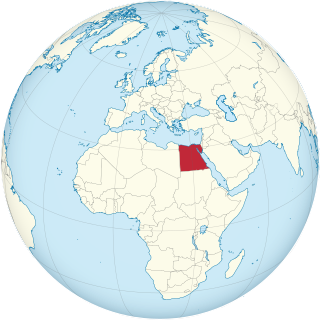 W
WArticles related to Egypt include:
 W
WSpanning over two thousand years, ancient Egypt was not one stable civilization but in constant change and upheaval, commonly split into periods by historians. Likewise, ancient Egyptian architecture is not one style, but a set of styles differing over time but with some commonalities.
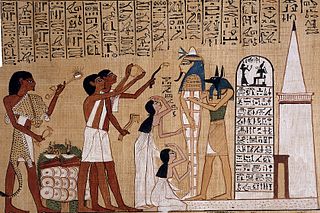 W
WThe ancient Egyptians had an elaborate set of funerary practices that they believed were necessary to ensure their immortality after death. These rituals included mummifying the body, casting magic spells, and burials with specific grave goods thought to be needed in the afterlife.
 W
WThe Book of Abraham is a work produced between 1835 and 1842 by Joseph Smith following the purchase of two Egyptian scrolls from a traveling mummy exhibition. According to Smith, the book was "a translation of some ancient records... purporting to be the writings of Abraham, while he was in Egypt, called the Book of Abraham, written by his own hand, upon papyrus". Smith said the papyri described Abraham's early life, his travels to Canaan and Egypt, and his vision of the cosmos and its creation.
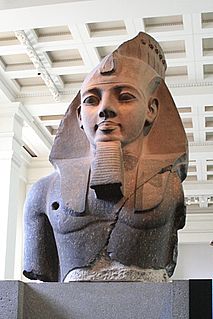 W
WThe Department of Ancient Egypt and Sudan is a department forming an historic part of the British Museum, with Its more than 100,000 pieces making it the largest and most comprehensive collection of Egyptian antiquities outside the Egyptian Museum in Cairo.
 W
WButo, Butus or Butosus was a city that the Ancient Egyptians called Per-Wadjet. It was located 95 km east of Alexandria in the Nile Delta of Egypt. What in classical times the Greeks called Buto, stood about midway between the Taly (Bolbitine) and Thermuthiac (Sebennytic) branches of the Nile, a few kilometers north of the east-west Butic River and on the southern shore of the Butic Lake.
 W
WCartonnage is a type of material used in ancient Egyptian funerary masks from the First Intermediate Period to the Roman era. It was made of layers of linen or papyrus covered with plaster. Some of the Fayum mummy portraits are also painted on panels made of cartonnage.
 W
WChasing Mummies: The Amazing Adventures of Zahi Hawass is a reality television series that aired on The History Channel in the United States. Produced by Boutique TV, the series depicted the adventures of archaeologist and Egyptologist Dr. Zahi Hawass and his discoveries in Egypt as he is followed by young archeological fellows and a camera crew. The series ran Wednesdays on the History Channel from July 14, 2010 until its end on September 15, 2010. The shows illustrates the complexities in the almost never-ending quest to preserve and discover artifacts from ancient Egypt.
 W
WThe Book of Abraham is a work produced between 1835 and 1842 by the Latter Day Saints (LDS) movement founder Joseph Smith that he said was based on Egyptian papyri purchased from a traveling mummy exhibition. According to Smith, the book was "a translation of some ancient records ... purporting to be the writings of Abraham, while he was in Egypt, called the Book of Abraham, written by his own hand, upon papyrus". The work was first published in 1842 and today is a canonical part of the Pearl of Great Price. Since its printing, the Book of Abraham has been a source of controversy. Numerous non-LDS Egyptologists, beginning in the mid-19th century, have heavily criticized Joseph Smith's translation and explanations of the facsimiles, unanimously concluding that his interpretations are inaccurate. They have also asserted that missing portions of the facsimiles were reconstructed incorrectly by Smith.
 W
WThe writing systems used in ancient Egypt were deciphered in the early nineteenth century through the work of several European scholars, especially Jean-François Champollion and Thomas Young. Ancient Egyptian forms of writing, which included the hieroglyphic, hieratic and demotic scripts, ceased to be understood in the fourth and fifth centuries AD, as the Coptic alphabet was increasingly used in their place. Later generations' knowledge of the older scripts was based on the work of Greek and Roman authors whose understanding was faulty. It was thus widely believed that Egyptian scripts were exclusively ideographic, representing ideas rather than sounds, and even that hieroglyphs were an esoteric, mystical script rather than a means of recording a spoken language. Some attempts at decipherment by Islamic and European scholars in the Middle Ages and early modern times acknowledged the script might have a phonetic component, but perception of hieroglyphs as purely ideographic hampered efforts to understand them as late as the eighteenth century.
 W
WStone reliefs in the Hathor temple at Dendera in Egypt, depict Harsomtus, in the form of a snake, emerging from a lotus flower. A variation of this motif, the so-called dendera light, displays Harsomtus in an oval container called hn, which might represent the womb of Nut. Sometimes a djed pillar supports the snake or the container.
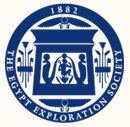 W
WThe Egypt Exploration Society (EES) is a British non-profit organization. The society was founded in 1882 by Amelia Edwards and Reginald Stuart Poole in order to examine and excavate in the areas of Egypt and Sudan. The intent was to study and analyze the results of the excavations and publish the information for the scholarly world. The EES have worked at many major Egyptian excavation and sites. Their discoveries include the discovery of a shrine for the goddess Hathor, a statue of a cow from Deir el-Bahri, the mortuary temple of Queen Hatshepsut, and the sculpted model of Nefertiti from Amarna. The Society has made major contributions to the study of the ancient Egyptian world. The Society is based in London and is a registered charity under English law.
 W
WThe majority of Egyptologists agree on the outline and many details of the chronology of Ancient Egypt. This scholarly consensus is the so-called Conventional Egyptian chronology, which places the beginning of the Old Kingdom in the 27th century BC, the beginning of the Middle Kingdom in the 21st century BC and the beginning of the New Kingdom in the mid-16th century BC.
 W
WEgyptology Scotland was formed on 12 December 2000 with the objective of promoting Egyptology, the study and understanding of ancient Egypt, in Scotland. The society holds an annual lecture series, mainly at the Kelvingrove Museum in Glasgow and the Augustine United Church in Edinburgh, and occasionally elsewhere.
 W
WAn embalming cache is a collection of material that was used by the ancient Egyptians in the mummification process and then buried either with or separately from the body. It is believed that because the materials had come in contact with the body, they had possibly absorbed part of it, and needed to be buried in order for the body to be complete in the afterlife.
 W
WJohn Beasley Greene was a French-born American Egyptologist and one of the earliest archaeological documentary photographers. He died at the age of 24. Because of his early demise, his pioneering work was quickly forgotten. The first important study of Greene was published in 1981.
 W
WThe Institut d'Égypte or Egyptian Scientific Institute is a learned society in Cairo specializing in Egyptology. It was established in 1798 by Napoleon Bonaparte to carry out research during his Egyptian campaign and is the oldest scientific institute in Egypt. The building in which it was housed was burnt down, with the loss of many documents, during the Arab Spring unrest of 2011. It reopened in December 2012.
 W
WThe Institut français d'archéologie orientale, also known as the French Institute for Oriental Archaeology in Cairo, is a French research institute based in Cairo, Egypt, dedicated to the study of the archaeology, history and languages of the various periods of Egypt's civilisation.
 W
WJoseph's Granaries is a designation for the Egyptian pyramids often used by early travelers to the region. The notion of a granary being associated with the Hebrew patriarch Joseph derives from the account in Genesis 41, where "he gathered up all the food of the seven years when there was plenty in the land of Egypt, and stored up food in the cities ... And Joseph stored up grain in great abundance, like the sand of the sea, until he ceased to measure it, for it could not be measured". "So when the famine had spread over all the land, Joseph opened all the storehouses and sold to the Egyptians". Similarly, in the Quran: "(Joseph) said: 'Give me charge of the granaries (خَزَائِنِ) of the land. I shall husband them wisely'" (12:55). The designation was used throughout the Middle Ages and only really abated in the Renaissance when travel to the region became easier and closer investigation revealed the implausibility of the structures serving as storehouses for foodstuffs.
 W
WLettre à M. Dacier is a scientific communication in the form of a letter sent in 1822 by the Egyptologist Jean-François Champollion to Bon-Joseph Dacier, secretary of the French Académie des Inscriptions et Belles-Lettres. It is the founding text upon which Ancient Egyptian hieroglyphics were first systematically deciphered by Champollion, largely on the basis of the multilingual Rosetta Stone.
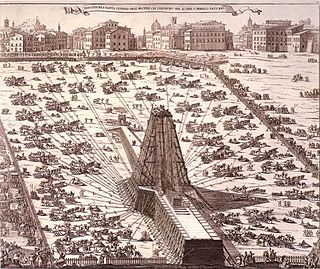 W
WThe city of Rome harbours the most obelisks in the world. There are eight ancient Egyptian and five ancient Roman obelisks in Rome, together with a number of more modern obelisks; there was also until 2005 an ancient Ethiopian obelisk in Rome.
 W
WMemphis or Menefer was the ancient capital of Inebu-hedj, the first nome of Lower Egypt that was known as mḥw ("north"). Its ruins are located near the modern town of Mit Rahina, 20 km (12 mi) south of Giza in Greater Cairo, Egypt.
 W
WNew Year's Bottles, or New Year's flasks, are an archaeological type of lentoid bottles found in the cultures of Ancient Egypt. These bottle were filled with water from the Nile, or possibly with perfume or oil, and offered as celebratory gifts for the New Year. Since the Egyptian New year began at the start of the flood season, offering water from the Nile was a way to symbolise the new cycle.
 W
WPaleoradiology is the study of archaeological remains through the use of radiographic techniques, such as X-ray, CT and micro-CT scans. It is predominately used by archaeologists and anthropologists to examine mummified remains due to its non-invasive nature. Paleoradiologists can discover post-mortem damage to the body, or any artefacts buried with them, while still keeping the remains intact. Radiological images can also contribute evidence about the person's life, such as their age and cause of death. The first recorded use of paleoradiology was in 1896, just a year after the Rōntgen radiograph was first produced. Although this method of viewing ancient remains is advantageous due to its non-invasive manner, many radiologists lack expertise in archeology and very few radiologists can identify ancient diseases which may be present.
 W
WThe Pyramid Texts are the oldest ancient Egyptian funerary texts, dating to the late Old Kingdom. They are the earliest known corpus of ancient Egyptian religious texts. Written in Old Egyptian, the pyramid texts were carved onto the subterranean walls and sarcophagi of pyramids at Saqqara from the end of the Fifth Dynasty, and throughout the Sixth Dynasty of the Old Kingdom, and into the Eighth Dynasty of the First Intermediate Period.
 W
WThe Rosetta Stone is a granodiorite stele inscribed with three versions of a decree issued in Memphis, Egypt, in 196 BC during the Ptolemaic dynasty on behalf of King Ptolemy V Epiphanes. The top and middle texts are in Ancient Egyptian using hieroglyphic and Demotic scripts respectively, while the bottom is in Ancient Greek. The decree has only minor differences between the three versions, making the Rosetta Stone key to deciphering the Egyptian scripts.
 W
WThe Saqqara Bird is a bird-shaped artifact made of sycamore wood, discovered during the 1898 excavation of the Pa-di-Imen tomb in Saqqara, Egypt. It has been dated to approximately 200 BCE, and is now housed in the Egyptian Museum in Cairo. The Saqqara Bird has a wingspan of 180 mm (7.1 in) and weighs 39.12 g (1.380 oz). Its purpose is not understood because of a lack of period documentation.
 W
WSerabit el-Khadim is a locality in the southwest Sinai Peninsula, Egypt, where turquoise was mined extensively in antiquity, mainly by the ancient Egyptians. Archaeological excavation, initially by Sir Flinders Petrie, revealed ancient mining camps and a long-lived Temple of Hathor, the Egyptian goddess who was favoured as a protector in desert regions and known locally as the mistress of the turquoise. The temple was first established during the Middle Kingdom in the reign of Sesostris I and was partly reconstructed in the New Kingdom.
 W
WA serapeum is a temple or other religious institution dedicated to the syncretic Greco-Egyptian deity Serapis, who combined aspects of Osiris and Apis in a humanized form that was accepted by the Ptolemaic Greeks of Alexandria. There were several such religious centers, each of which was a serapeion or, in its Latinized form, a serapeum. An Egyptian name for the temple of Osiris-Apis was Pr-Wsỉr-Ḥp "House of Osiris-Apis".
 W
WThe Serapeum of Alexandria in the Ptolemaic Kingdom was an ancient Greek temple built by Ptolemy III Euergetes and dedicated to Serapis, who was made the protector of Alexandria. There are also signs of Harpocrates. It has been referred to as the daughter of the Library of Alexandria. The site has been heavily plundered.
 W
WThe Serapeum of Saqqara is a serapeum located north west of the Pyramid of Djoser at Saqqara, a necropolis near Memphis in Lower Egypt. It was a burial place of Apis bulls, sacred bulls that were incarnations of the ancient Egyptian deity Ptah. It was believed that the bulls became immortal after death as Osiris Apis, a name that appears in Coptic as ⲟⲩⲥⲉⲣϩⲁⲡⲓ, Userhapi, which was borrowed in Greek as Σέραπις, Serapis, in the Hellenistic period.
 W
WSolar barques were the vessels used by the sun god Ra in ancient Egyptian mythology. During the day, Ra was said to use a vessel called the Mandjet or the Boat of Millions of Years, and the vessel he used during the night was known as the Mesektet.
 W
WThe Sothic cycle or Canicular period is a period of 1,461 Egyptian civil years of 365 days each or 1,460 Julian years averaging 365¼ days each. During a Sothic cycle, the 365 day year loses enough time that the start of its year once again coincides with the heliacal rising of the star Sirius on 19 July in the Julian calendar. It is an important aspect of Egyptology, particularly with regard to reconstructions of the Egyptian calendar and its history. Astronomical records of this displacement may have been responsible for the later establishment of the more accurate Julian and Alexandrian calendars.
 W
WStar shafts are narrow ducts leading out of ancient structures such as Egyptian pyramids.
 W
WThe Supreme Council of Antiquities (SCA) was a department of the Egyptian Ministry of Culture from 1994 to 2011. It was the government body responsible for the conservation, protection and regulation of all antiquities and archaeological excavations in Egypt, and was a reorganization of the Egyptian Antiquities Organisation, under Presidential Decree No. 82 of Hosni Mubarak.
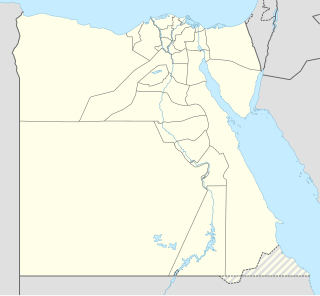 W
WThinis was the capital city of the first dynasties of ancient Egypt. Thinis remains undiscovered but is well attested by ancient writers, including the classical historian Manetho, who cites it as the centre of the Thinite Confederacy, a tribal confederation whose leader, Menes, united Egypt and was its first pharaoh. Thinis began a steep decline in importance from Dynasty III, when the capital was relocated to Memphis, which was thought to be the first true and stable capital after unification of old Egypt by Menes. Thinis's location on the border of the competing Heracleopolitan and Theban dynasties of the First Intermediate Period and its proximity to certain oases of possible military importance ensured Thinis some continued significance in the Old and New Kingdoms. This was a brief respite and Thinis eventually lost its position as a regional administrative centre by the Roman period.